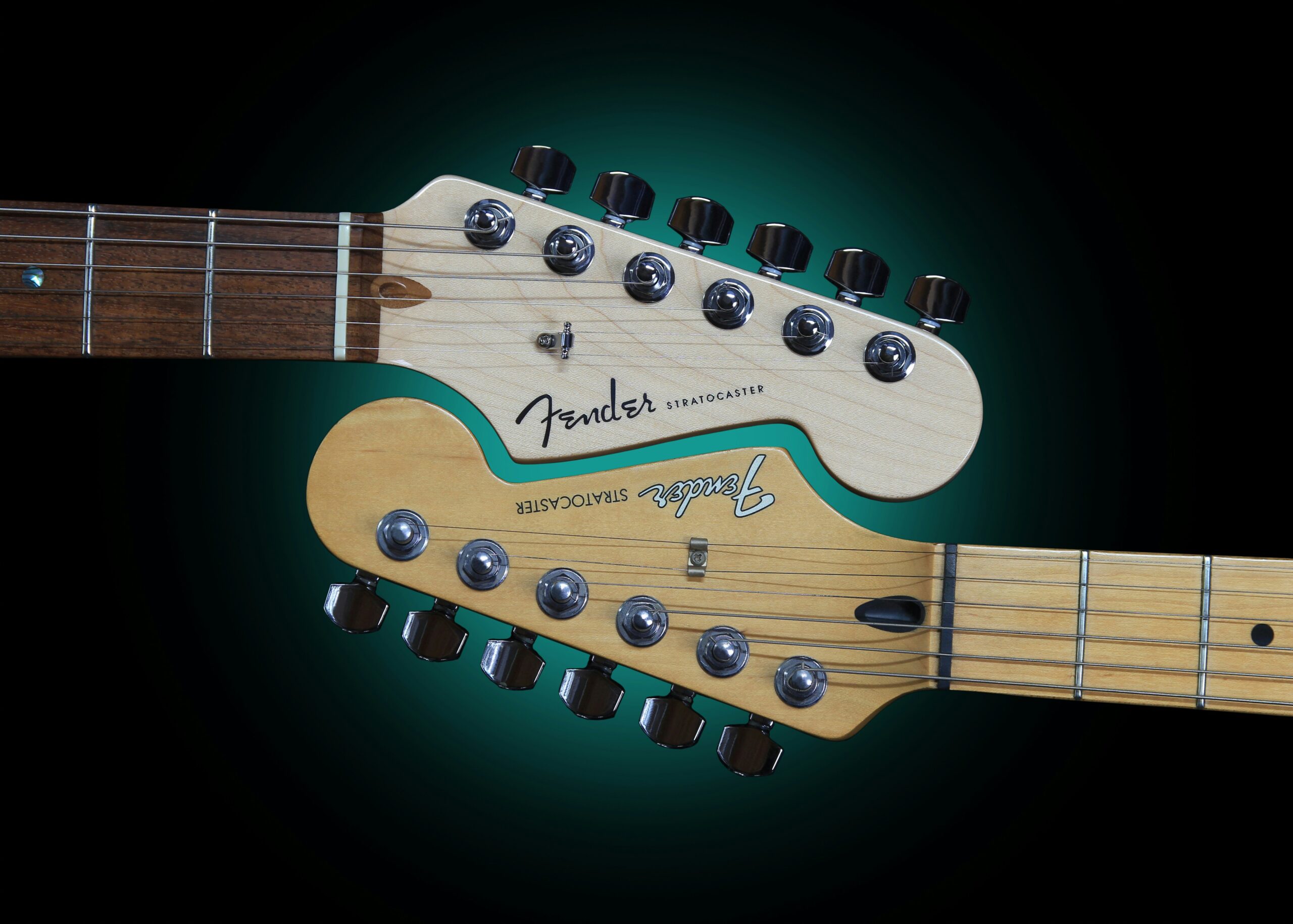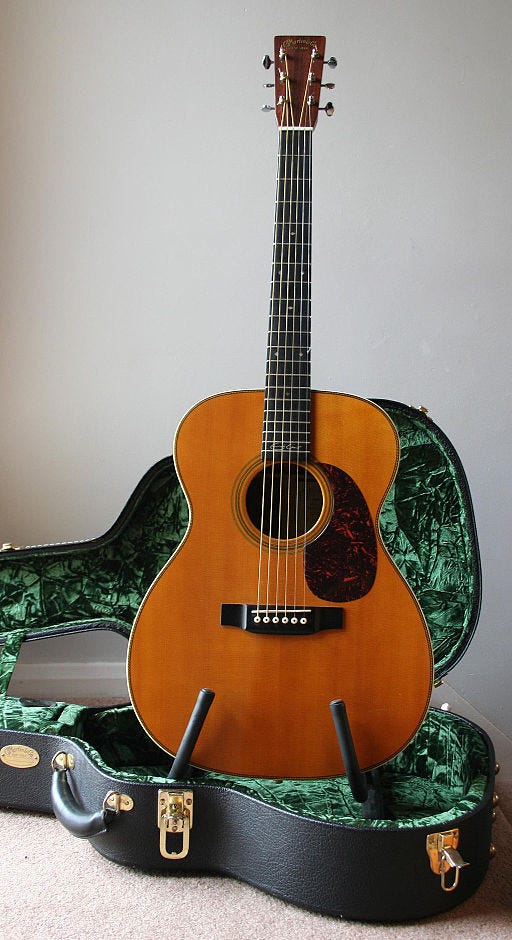I’ve recently been trying to get my Rondo SX Stratocaster copy to sound and play better.
I bought it because it definitely has “mojo” (if you play guitar, you know what I mean), but there were a few issues as well.
After a lot of fiddling and a bit of fixing, I finally had it playing pretty decently. But it wasn’t until I lowered the tuning by a half-step — from E standard to E-flat standard — that the guitar felt and performed at its best.
And it turns out, I’m not the only one to have noticed this. It’s a common observation that Stratocasters just work better in E-flat tuning.
But why?
While in my opinion there is always a bit of mystery when it comes to why any guitar plays or feels well, I’ve identified four reasons why I think tuning down makes so much sense when playing a Strat.
(Note: To tune a guitar to E-flat, tune each string, starting with the lowest in pitch and ending with the highest, to the following notes: Eb-Ab-Db-Gb-Bb-Eb. The video below shows you how.)
Easier to fret and bend notes
A Stratocaster and a Les Paul are two very different beasts. But for the purposes of our discussion, one of the main differences is scale length.
If you don’t know, “scale length” refers to the distance between the nut and the bridge. It’s the total length of the vibrating portion of the string. A Strat has a 25.5” scale length, but a Les Paul is shorter at 24.75”.
The upshot of this difference is you have to have more tension on Strat strings to bring them up to pitch than Les Paul strings. And when you have more tension on a string, it’s harder both to fret and bend notes. (If you don’t believe me, try playing a mandolin sometime; its strings are extremely taut. You’ll think rats were chewing on your fingertips by the time you’re done!)
So what’s the solution? Reducing the tension by tuning each string down. If you have a Strat, try it and you’ll see it becomes much easier to play tuned down.
Richer, deeper tones
Another major difference between a Strat and a Les Paul is the pickup configuration. Many Strats have three single-coil pickups, while most Les Pauls feature two humbuckers.
Single coils are great for particular sounds, but they can suffer from sounding a little thin. Down-tuning your Strat can help. Not only do the strings physically play a lower sound, but they vibrate more, too, resulting in a better tone with a little more low end.
Now, will this make your Strat sound like it’s got a couple of Burstbuckers in it? Well, probably not, but it is likely going to be enough of a difference that you can notice it.
Easier to sing over
For most of its history, the guitar has (unfortunately) been a male-dominated instrument. And, of course, men tend to have a lower vocal range. This can be problematic when trying to sing over chords in standard tuning.
Tuning your guitar down a semitone can help.
Maybe (like me) you can’t hit a high E, but you can just manage a D sharp. Or for gigging or touring musicians, singing night after night can wear down your voice, and taking things down a half-step can save you some of that wear and tear.
This could very well be one of the reasons Jimi Hendrix tuned down to E-flat. And often with live concerts, you’ll notice songs are up to a full step lower than the album version. Jon Bon Jovi is a great example — he just can’t sing those high notes anymore like he did in the 1980s.
Tradition
There’s one more reason why tuning a Strat down a half-step is a thing, especially in rock and blues music. Simply put, we do it because our heroes did it!
A lot of the guitar greats of the past tuned down for some or all of their songs. The list includes Jimi Hendrix, SRV, Eric Johnson, Jeff Beck, Doyle Bramhall, and more.
Unfortunately, we don’t always know why they chose to do this. Maybe they discovered (like I did) that it just sounded better. Maybe it better fit their vocal range. Maybe their heroes tuned down so they dutifully followed suit.
Whatever the reasons, E-flat tuning is here to stay.
So what do you think? Do you tune your Strat (or any other guitar) to E-flat standard? If so, why? What are the benefits and drawbacks?
And if not, give it a try and see what you think. Let us know the results in the comments.




